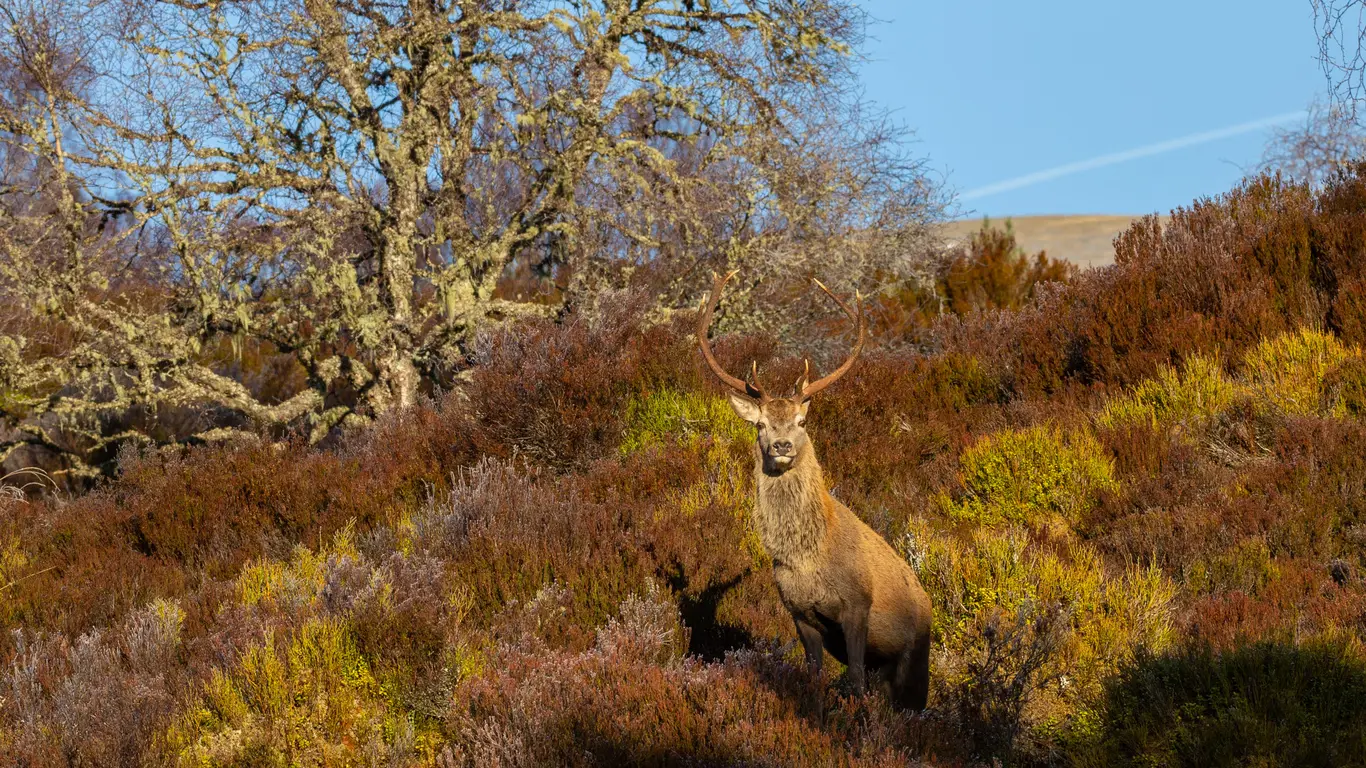Deer management
Deer management
We manage deer numbers to protect the 150 million young trees that are at risk of browsing damage in our forests. Tens of millions of mature trees are also at risk from bark-stripping and sensitive habitats like peatlands and native woodlands are at risk from trampling and prevention of natural regeneration. Deer management helps reduce the impacts of climate change and protects other wildlife.

Why we manage deer levels
Deer numbers are too high. In fact, it's estimated there are over a million deer in Scotland, with populations having doubled since 1990. For sustainable forest management there should be around 2-3 deer per square kilometre. We estimate that in some places there are as many as 64 deer per square kilometre.
Impact on deer
When deer numbers are too high, they can have a negative impact on themselves, the environment and our land management objectives. As deer have no natural predators in Scotland, we need to manage them ourselves.
When deer numbers are too high there is potential for disease to spread faster through the population due to close contact. Higher numbers also impact on the amount of food and shelter available for them and often in higher deer zones to starve as a result.
Damage to woodlands
Deer impact young trees in a few ways.
When deer strip the bark off trees, they make them more prone to disease. This can increase the rate of disease spreading. This causes large numbers of trees to die.
Deer will also eat young trees, killing or deforming them before they’ve had a chance to grow. Large numbers of deer can trample, compact and erode soils, not only killing plants but slowing their growth.
Impact on climate change
We are planting trees and restoring peatlands to capture carbon from the atmosphere. This will help us reduce our impact on the climate. Carbon is released back into the atmosphere when trees are damaged and die. Peatland erosion - caused by large numbers of deer - also releases carbon.
Protecting wildlife
Scotland's national forests and land are home to a huge number of species. The law protects many of these species. These other plants and animals rely on soils, food and shelter that can be damaged by deer. If deer numbers are too high, they can degrade entire habitats.
Improving public safety
Ticks are small insects that usually feed on sheep and deer. They also feed on humans, sometimes passing on Lyme disease. As deer numbers rise, the spread and numbers of ticks can also rise, carried by deer.
Deer have also increased the number of road traffic accidents. This includes cars hitting deer and those that swerved to avoid deer. Collisions can cause injury and death. The number of recorded collisions rose from 1,135 in 2008 to 2,006 in 2017. There will have been many more incidents that weren’t recorded. The actual number of collisions could be as high as an estimated 8,000-10,000 across Scotland’s road network.
Sustainable wild venison benefits our economy
We supply the vast majority of the deer we cull to the venison-processing market. Wild venison is important because;
- the processing of venison supports hundreds of jobs across the country
- it contributes to Scotland’s economy through the food and drink sector
- venison is one of the healthiest meats available to buy
- locally harvested venison has a low carbon footprint
How we manage deer levels
Planning our forests to minimise deer impact
Deer management teams provide advice on deer behaviour and welfare. This helps planners include features like protective fencing and deer glades. They might recommend suitable tree species to plant too. It’s important to balance protecting growing trees with providing land for deer to roam.
Using data and evidence
We use data to make our deer management decisions. This can include:
- habitat impact assessments
- inspecting tree damage
- dung counts
- deer counts
Our surveyors are trained to tell the difference between the impacts caused by deer and other animals. This makes sure culls are set at the appropriate level.
Working with others
We work closely with landowners, residents and other organisations such as:
Responsible culling
We set cull targets in an area once we’ve assessed the evidence and consulted with the relevant people. These targets aim to reduce deer numbers to a sustainable level. This helps the remaining deer live healthy lives. We only employ trained, qualified and experienced rangers and contractors to cull deer.
Out of season culling
We conduct out of season culling of female deer under licence from NatureScot in relation to the Deer (Scotland) Act 1996 (as amended). These licences are widely used by other land managers to prevent damage by deer. They’re issued to those who follow Wild Deer Best Practice Partnership guidance.
In 2024/25 NatureScot issued 254 section 5(6) out of season authorisations. Ten of these related to our deer management activity.
Our rangers and contractors understand the need to cull young deer before mothers.
We monitor our culling operations on an ongoing basis. We apply best practice and high standards in order to protect deer welfare. All deer controllers operating out of season are registered with NatureScot.
Working to the highest standards
We aim to meet all environmental and safety standards. We follow the guidance set out in:
All our wildlife rangers and deer contractors:
- hold deer management qualifications
- are registered as ‘Fit and Competent’ by NatureScot
- hold Food Standards Scotland Trained Hunter status
- work to Scottish Quality Wild Venison assured standards
Emergency situation protocol
During severe winter conditions deer often seek shelter and food in our forests. Increased deer numbers can result in increased browsing damage and deer in poor condition. We take this into account when making decisions around culling the deer.
We worked alongside ADMG to develop a protocol. This provides a consistent approach and better communication in winter emergencies. You can view this protocol here: Deer management emergency situation protocol.